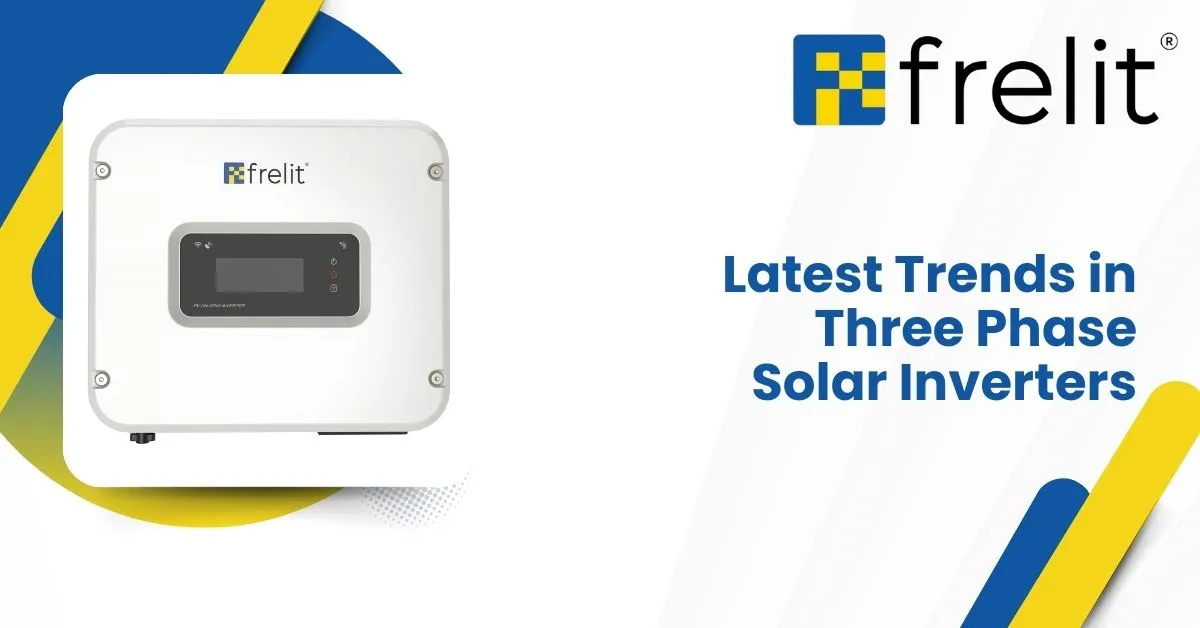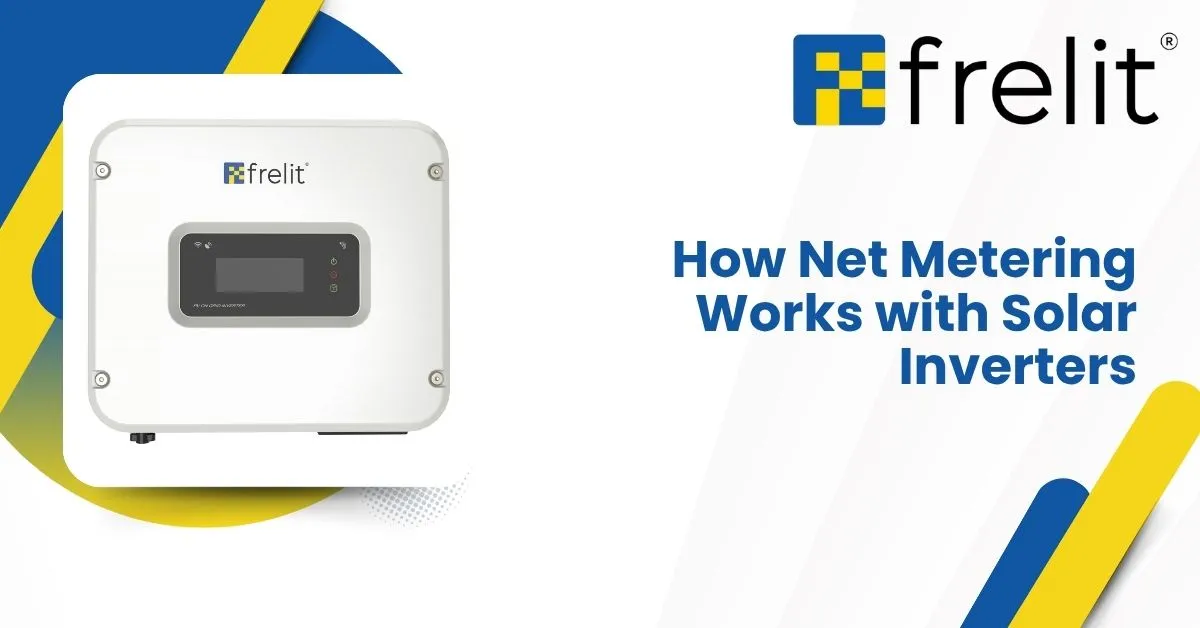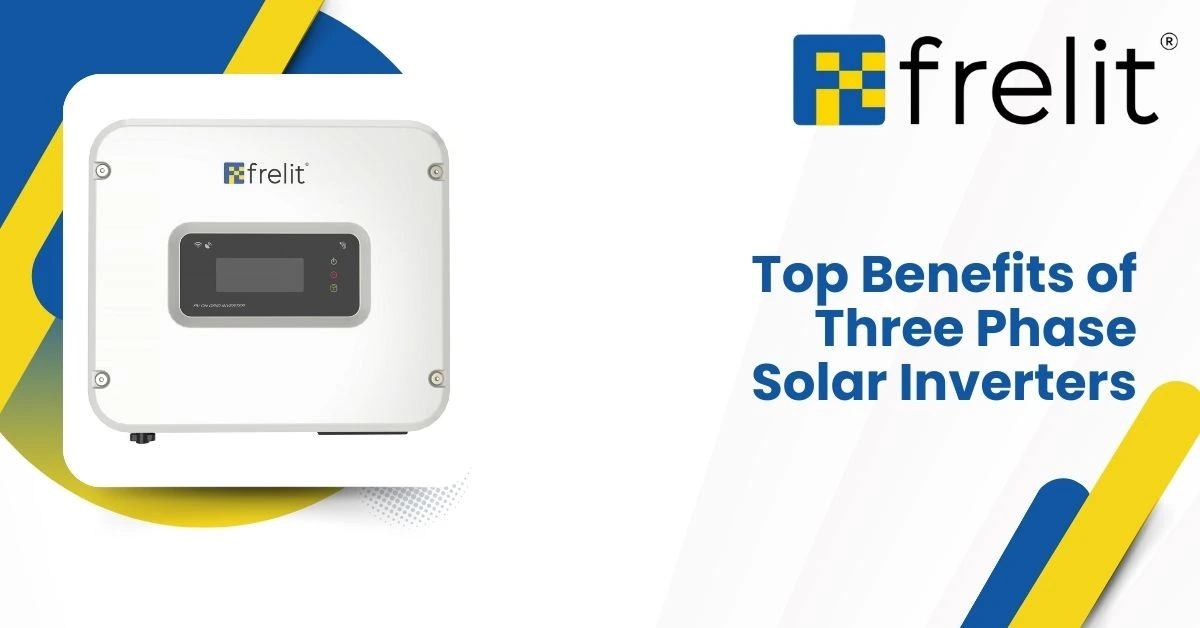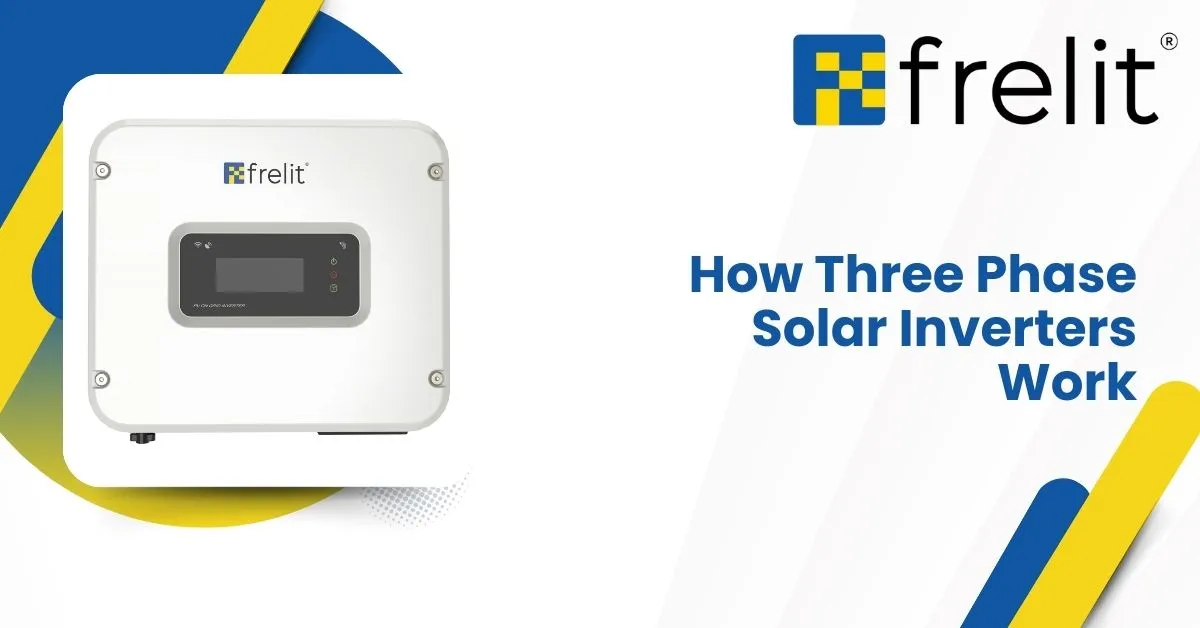
As industries and commercial establishments increasingly adopt renewable energy, solar inverters are becoming the backbone of efficient power management. Among these, three phase solar inverters have emerged as a vital solution for large-scale energy requirements. Designed to handle high loads and provide reliable power, these inverters are revolutionizing industrial solar systems. In this blog, we explore the latest trends in three phase solar inverters, their benefits, and why industries are rapidly moving toward them.
What Are Three Phase Solar Inverters?
A three phase solar inverter converts the DC electricity generated by solar panels into AC electricity distributed across three phases. Unlike single-phase inverters, these inverters ensure balanced power, improved voltage stability, and high efficiency. They are particularly suitable for industrial environments where heavy machinery, HVAC systems, and continuous operations demand uninterrupted power supply.
Why Industries Are Choosing Three Phase Solar Inverters?
Industries have unique energy needs, such as high-load equipment, fluctuating energy demand, and critical uptime requirements. Three phase solar inverters offer:
- Balanced Load Distribution: Evenly distributes electricity across three phases to prevent overloading.
- High Efficiency: Reduces energy loss and improves power conversion.
- Reliability: Maintains stable operations for industrial equipment.
- Scalability: Easily expandable to meet future energy demands.
These factors make them a preferred choice over single-phase solar inverters in industrial applications.
Trends in Three Phase Solar Inverters
The solar industry is evolving rapidly, and three phase solar inverters are leading the way with smart features, hybrid integration, and higher efficiency. These trends are transforming how industries manage energy and cut costs.
Trend 1: Smart and IoT-Enabled Inverters
One of the major trends in industrial solar inverters is the integration of smart technology and IoT. Modern three phase solar inverters now come with:
- Real-time Monitoring: Track energy generation and consumption remotely.
- Predictive Maintenance: Identify potential issues before they escalate, reducing downtime.
- Automated Alerts: Get notifications for faults, overloads, or system inefficiencies.
Smart features allow industries to optimize their solar systems, minimize maintenance costs, and improve overall energy management.
Trend 2: Hybrid Inverters and Energy Storage Integration
The trend of combining three phase solar inverters with battery storage is growing rapidly. Hybrid inverters allow industries to:
- Store excess energy for later use, ensuring uninterrupted operations during grid outages.
- Optimize energy usage during peak demand periods.
- Reduce reliance on the electricity grid and lower utility bills.
By pairing solar inverters with energy storage, industries can achieve energy independence and long-term cost savings.
Trend 3: Advanced MPPT Technology
Maximum Power Point Tracking (MPPT) is now standard in industrial solar inverters. This technology:
- Ensures maximum energy extraction from solar panels.
- Optimizes performance under variable weather conditions.
- Increases the overall efficiency of solar systems.
MPPT-equipped three phase solar inverters help industries save more money by generating more usable power from the same solar panels.
Need a three phase solar inverter for your industry or plant? Contact us today for expert guidance, installation, and tailored solar solutions!
Trend 4: Remote Monitoring and Cloud-Based Solutions
Industrial operations are increasingly using cloud-enabled solar inverters. This trend allows facility managers to:
- Monitor system performance from anywhere in the world.
- Generate detailed reports on energy production and consumption.
- Identify and troubleshoot issues remotely.
Cloud-based monitoring enhances decision-making, reduces operational costs, and improves system efficiency.
Trend 5: Compliance with Grid Standards
Modern grid-tied three phase solar inverters are designed to comply with evolving electrical grid standards. Key features include:
- Anti-Islanding Protection: Ensures safety during grid outages.
- Reactive Power Control: Maintains grid stability.
- Voltage Ride-Through: Keeps operations stable during voltage fluctuations.
Compliance ensures industries can safely export excess energy to the grid while enjoying incentives like net metering.
Trend 6: Modular and Scalable Designs
Industries prefer solar inverters that are modular and scalable. Latest three phase solar inverters offer:
- Easy expansion for increasing energy needs.
- Reduced upfront costs, as companies can start small and scale gradually.
- Simplified maintenance and reduced downtime.
Modular inverters make long-term solar investments more flexible and future-proof for industrial operations.
Trend 7: Cost Efficiency and ROI
The solar inverter price in India 2025 is becoming more competitive due to technological advancements and government incentives. For industries, this means:
- Lower upfront costs for high-capacity inverters.
- Faster ROI due to energy savings and reduced operational costs.
- Access to advanced features like hybrid capabilities and smart monitoring without breaking the budget.
Investing in three phase solar inverters is a strategic decision for long-term industrial sustainability.
Applications of Three Phase Solar Inverters in Industries
Industries across sectors are increasingly adopting three phase solar inverters. Some common applications include:
- Manufacturing Units: Powering heavy machinery and assembly lines.
- Textile & Chemical Plants: Ensuring consistent energy for production processes.
- Food Processing & Cold Storage: Maintaining uninterrupted operations.
- Large Commercial Buildings: Running HVAC, lighting, and essential systems efficiently.
- Agro-Industries: Supporting irrigation pumps and processing equipment.
By integrating three phase solar inverters, industries can reduce electricity bills, improve energy reliability, and contribute to sustainability goals.
The future of three phase solar inverters is bright. With smart technology, hybrid integration, and improved efficiency, these inverters are set to become standard in industrial and large commercial solar setups. Businesses that adopt the latest trends today will benefit from cost savings, enhanced energy independence, and compliance with emerging energy regulations.
Frequently Asked Questions
What is a three phase solar inverter?
A three phase solar inverter converts DC electricity from solar panels into AC power across three phases, making it ideal for industries and large commercial setups.
Why choose a three phase solar inverter for industrial use?
These inverters provide balanced load distribution, voltage stability, and high efficiency—perfect for heavy machinery, factories, and large-scale operations.
How does a three phase solar inverter work?
It takes DC power from solar panels, converts it into three-phase AC power, and distributes it evenly to industrial loads while supporting grid synchronization if needed.
Can three phase solar inverters be used with batteries?
Yes, hybrid three phase inverters can store excess energy in batteries for use during peak demand or outages, ensuring uninterrupted power supply.
What is the price of a three phase solar inverter in India?
The price varies by capacity and brand, typically ranging from ₹1.5 lakh to ₹5 lakh for industrial models.
Conclusion
The latest trends in three phase solar inverters highlight a clear shift toward smart, efficient, and scalable solutions for industries. From IoT-enabled monitoring to hybrid energy storage and grid compliance, these inverters offer long-term benefits for cost savings, reliability, and sustainability.
For industries looking to optimize their solar power systems, investing in the right three phase solar inverter today ensures operational efficiency and a greener future.



